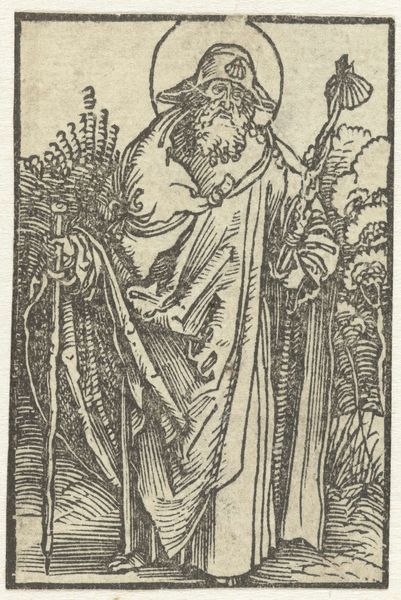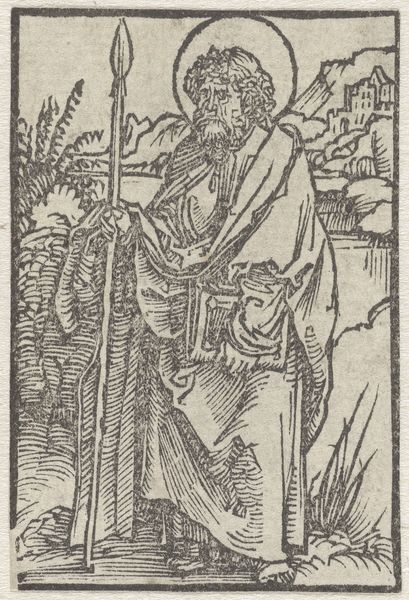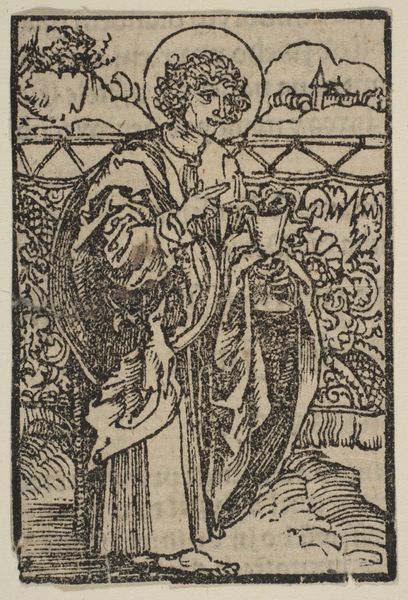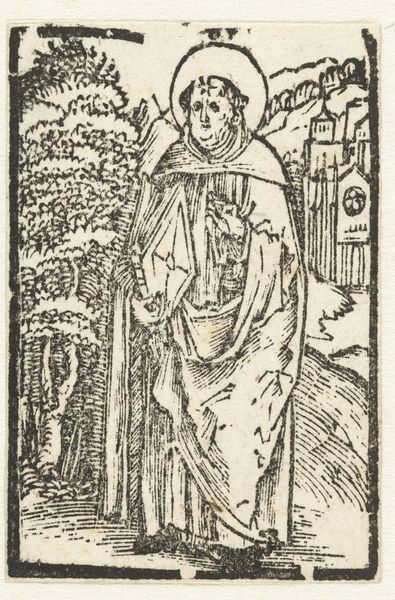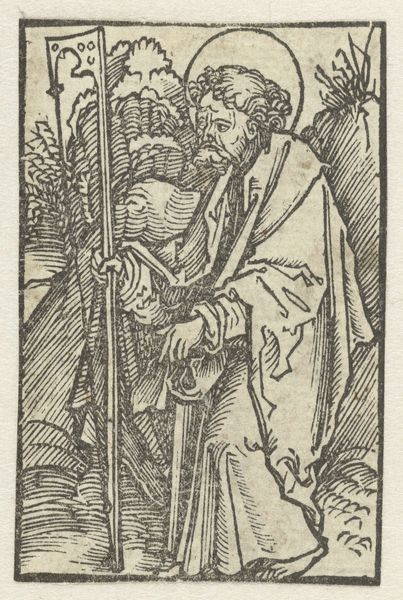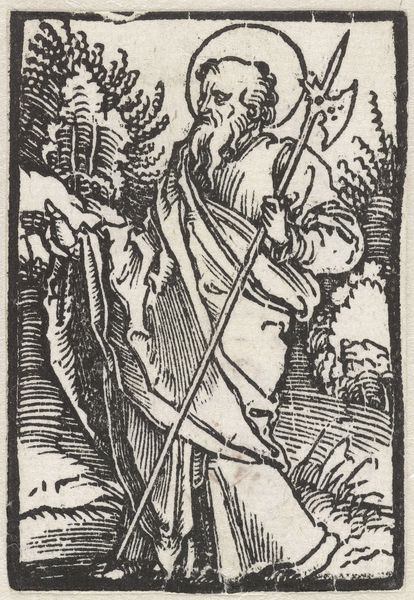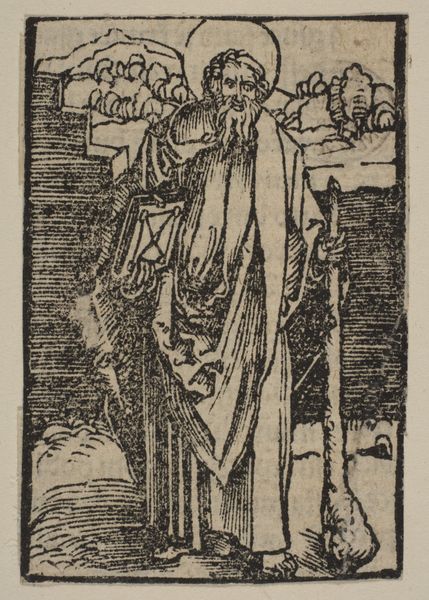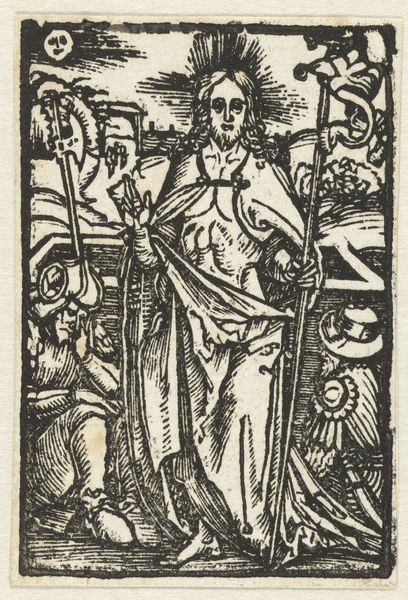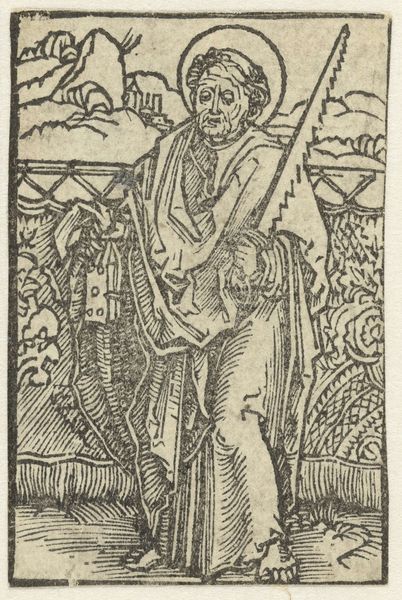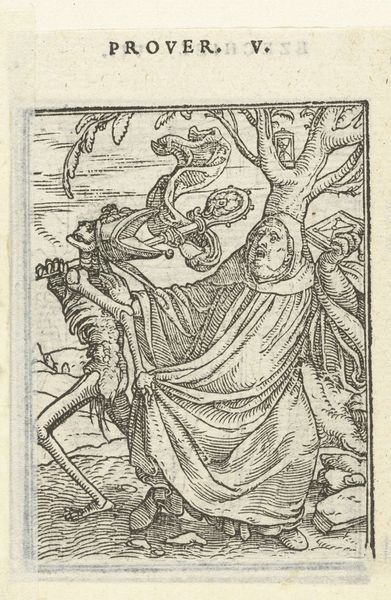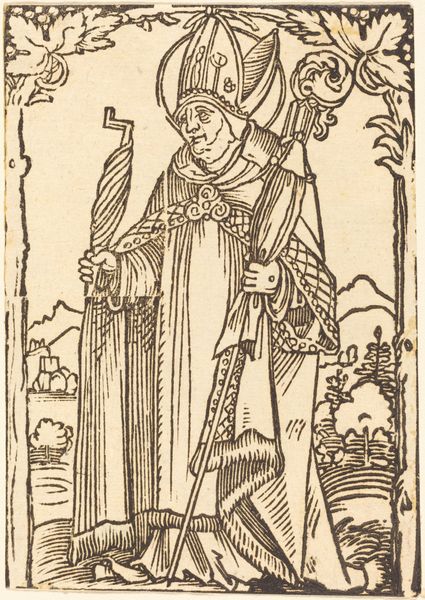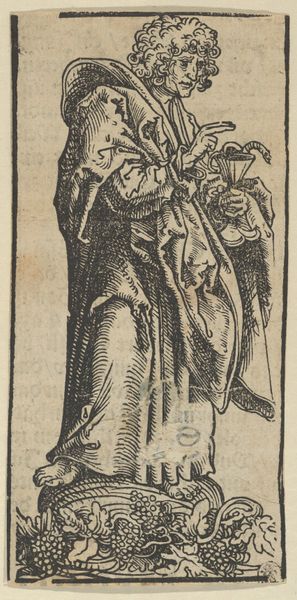
drawing, print, ink, woodcut, engraving
#
portrait
#
drawing
#
pen drawing
# print
#
pen illustration
#
pen sketch
#
book
#
figuration
#
ink line art
#
11_renaissance
#
ink
#
woodcut
#
northern-renaissance
#
engraving
Dimensions: height 62 mm, width 42 mm
Copyright: Rijks Museum: Open Domain
Curator: The stark contrast immediately strikes me; it's so graphic in its stark black and white. The vertical lines composing St. Anthony's robes give him an almost imposing stature, despite the print's diminutive size. Editor: Indeed. What we see before us is "Heilige Antonius," or "Saint Anthony," a work by Albrecht Durer from 1503. Created using woodcut techniques, a testament to the graphic arts during the Northern Renaissance, it is now housed at the Rijksmuseum. Curator: That medium is so interesting. Notice how Durer utilizes line weight to create form and shadow. The hatching technique to model Anthony's face is incredible, given the limitations of the woodcut. It's not just a picture of St Anthony; it is about the properties of line and shape within a frame. Editor: Absolutely. The very choice of St. Anthony, famed for his struggles against temptation in the desert, reflects the anxieties of the period. The detailed portrayal offered accessible and compelling imagery in an era grappling with moral and spiritual change, making figures such as these particularly culturally resonant. Curator: Yes, and notice his gaze. Although averted slightly, the angle of his stare holds tremendous power to give him that look of one removed from the world but aware of our gaze. The texture Durer is able to carve makes a world of difference here. Editor: And this depiction is so fascinating when seen against broader narratives. Saint Anthony's connection to healing and protection might explain why many such images appeared in hospitals and monasteries. A print like this wasn’t merely aesthetic; it had a tangible role within communal life. Curator: Ultimately, the piece encapsulates Durer's exceptional control of visual syntax. The carefully considered composition speaks to the potential held within each engraved line. Editor: Looking at it today allows us a window into how people used art to find both solace and inspiration during a turbulent time. It really does tell you a lot.
Comments
No comments
Be the first to comment and join the conversation on the ultimate creative platform.
